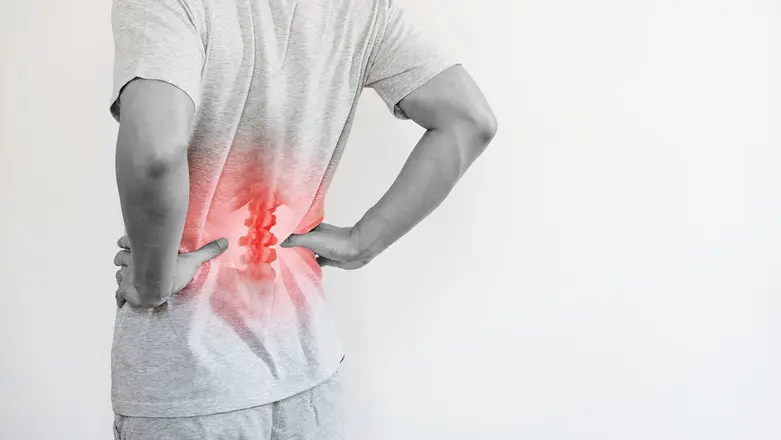-
-
Featured Care Areas

Common back and spine conditions
The spine supports the body structure and contains nerves that transmit and receive signals from the brain. Injury to the spinal area may result in severe health consequences such as pain, numbness, weakness or paralysis.
Spinal injury in its early stages may present with subtle symptoms which could worsen over time. Learn more about the common symptoms and conditions affecting the back and spine, as well as related orthopaedic treatments.
Collapse All
Degenerative spine conditions are a result of wear and tear on your spinal discs, joints and bones.
These conditions affect your lower back and neck areas, causing pain and movement limitations. Degenerative spine disease may lead to conditions such as:
- Degenerative disc and annular tears
- Degenerative spondylolisthesis and scoliosis
- Slipped (herniated) disc
- Spinal stenosis
Learn more about degenerative spine conditions and our treatments.
What is lower back pain?
Lower back pain is one of the most common conditions related to spine health.
What causes lower back pain?
There are many reasons for lower back pain. One of the common causes is a gradual strain to the lower back muscles due to:
- Poor posture
- Chronic overuse
- Improper sleeping positions
- Incorrect lifting techniques
Degenerative change can affect the facet joint that links 2 vertebrae together in the spinal column. It can also affect the intervertebral discs that absorb shock between each vertebra. Both of these changes can result in facet joint arthritis.
Another cause of lower back pain is tiny injuries from everyday activities over time. These injuries can affect the intervertebral discs, spinal ligaments or facet joints, and cause general, non-specific lower back pain, movement limitations, and degeneration.
What are the symptoms of a lower back injury?
Signs and symptoms of an injury to the lower back include:
- Pain in the back
- Pain upon weight bearing
- Pain during coughing or sneezing
- Nerve pain in the buttocks, thighs, legs or feet
- Referred pain, which is a pain in another area due to an affected nerve
- Stiff back or limited movement of the back
- Muscle spasms
How is lower back pain treated?
Treatment for lower back pain depends on your clinical condition and the severity of your injury. Your doctor will assess your injury before recommending a treatment plan tailored to your condition and goal.
Speak to our orthopaedic specialists for diagnosis and treatment of your lower back pain.
Lumbar spinal stenosis is a progressive condition where the space around the spinal cord narrows. This puts pressure on the cord and nerves that travel through the lower back into the legs.
Symptoms of lumbar spinal stenosis include:
- Back pain
- Burning pain in the buttocks or legs
- Pain that radiates downwards as you walk
- Numbness and tingling in the buttocks or legs
Learn more about lumbar spinal stenosis and our treatments.
Sciatica, also known as lumbar radiculopathy, is pain along the sciatic nerve, which extends from the back of the pelvis down the back of the thigh and leg.
The sciatic nerve is the largest nerve in the body, and also the main nerve of the leg. It controls the muscles while providing sensation to various parts of your leg.
Sciatica usually affects only one side of the body, where you may feel a lower back pain that radiates down the buttock and back of one thigh, as well as sensory changes and weakness in that leg.
Learn more about sciatica and our treatments.
A slipped disc is when a fibrocartilage disc between the bony segments of the spine is damaged and presses on the nerves. This condition is also known as a 'herniated', 'ruptured' or 'prolapsed' disc.
The symptoms of a slipped disc include:
- Pain associated with lower limb movement
- Pain, tingling or numbness in the back, buttock or legs
- Difficulty controlling bowel movements and urination
- Numbness in the genitals and anus.
Learn more about slipped discs and our treatments.
Spondylosis, also known as spinal osteoarthritis, is a degenerative condition of the joints of the spine, and usually also involves the discs, ligaments and joints.
In spondylosis, the discs between the vertebrae (spinal bones) lose their cushioning effect, the facet joints develop arthritis, and the ligaments thicken or weaken. This can lead to small stress fractures that weaken the vertebrae. In more severe cases, certain bones may shift or slip out of place.
Spondylosis is likely to result in:
- Lower back pain
- Pain radiating down the legs
- Difficulty maintaining an upright posture
- Numbness or tingling in the arms or legs.
Learn more about spondylosis and our treatments.
Osteoporosis is a condition in which your bone tissues break down faster than your body can rebuild them, leading to brittle and weak bones. This increases your risk of fractures, especially in the spine, hips, and wrists.
It is hard to detect bone loss in the early stages. With multiple osteoporotic spinal fractures, you may notice:
- Your height decreasing
- Your posture becoming hunched
- A fracture from a mild impact, such as falling, bending over or even coughing
If you have a spinal fracture (also known as a collapsed vertebra or a vertebra fracture), you may also experience a sudden onset of back pain.
Learn more about osteoporosis and our treatments.
This page has been reviewed by our medical content reviewers.



